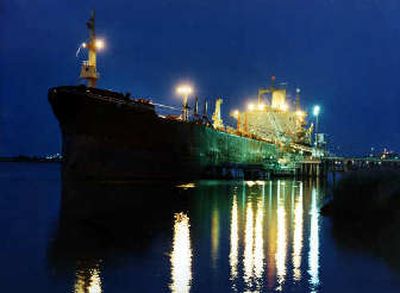Nation’s tank topped off

WASHINGTON — The United States’ emergency fuel tank — the Strategic Petroleum Reserve — is almost full for the first time since its creation about 30 years ago.
The milestone is significant because it gives the country a larger energy-security blanket than ever to call upon in the event of a future supply disruption. But the stockpiling of 700 million barrels of oil, which is scheduled for completion by the end of August, also could bring some immediate relief to the global energy market, analysts say.
When the Energy Department effectively tops off its reserve, which is stored in underground salt caverns located along the Gulf Coast in Texas and Louisiana, roughly 75,000 barrels of oil per day will become available for commercial purposes.
Oil analyst Jim Burkhard of Cambridge Energy Research Associates in Cambridge, Mass., said “it will add to an overall trend of softening demand growth.”
Tim Evans, an oil analyst with IFR Energy Services in New York, argues that the net impact would be a swing of 150,000 barrels a day because demand essentially would fall by 75,000 while the available supply would rise by that amount. “You get double the impact here,” he said.
Even if he’s right, that amounts to less than 0.2 percent of the average worldwide demand of about 84 million barrels a day.
Lawrence J. Goldstein, president of PIRA Energy Group in New York, said it is possible that OPEC might rein in production slightly once the SPR demand disappears, though he feels more strongly that the SPR’s near topping off will go unnoticed on world oil markets. “We’re talking about nickels and dimes,” he said.
Even Burkhard cautioned that in spite of slowing economic growth in 2005, global oil demand is expected to grow this year by another 1.8 million barrels a day — a level of consumption that should keep prices at elevated levels given the world’s supply tightness.
On Tuesday, light sweet crude futures settled at $53.76 per barrel.
In its latest weekly petroleum supply report, the Energy Department said the SPR contained 693.3 million barrels, up from 660.8 million a year earlier.
The oil pumped into the SPR comes from petroleum producers in lieu of royalties they must pay the government for operating on federally leased lands. Once the inflow is halted, those royalties will flow to the government at an estimated rate of more than $80 million per month, assuming a value of about $38 per barrel for the sour crude the government had been stockpiling.
The oil in the SPR now is roughly worth $18 billion.
Whether or not prices ease after the SPR is full, the process’s end will temporarily put to rest a debate about whether the Bush administration’s policy of filling the reserve to the brim amid record-high oil prices was a good one.
Critics, including Sen. Charles Schumer (D-N.Y.) and the Air Transport Association, a trade group for the airline industry, said the policy exacerbated the problem of high fuel prices and they called for it to end.
The Bush administration countered that it would not use the SPR as a tool to nudge prices. Supporters said so little was going into the reserve that it wasn’t having that large an effect on the market anyway.